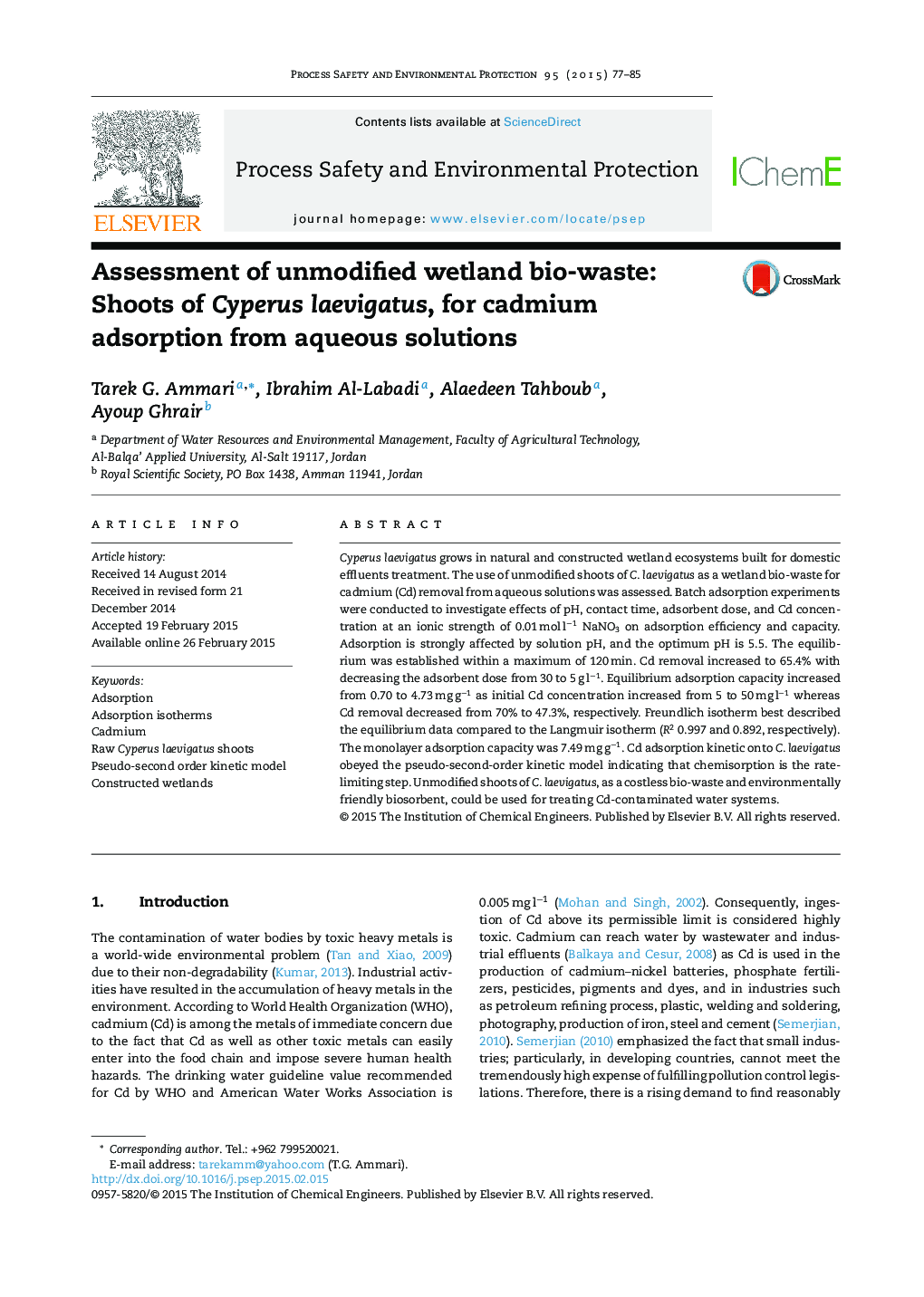| Article ID | Journal | Published Year | Pages | File Type |
|---|---|---|---|---|
| 588255 | Process Safety and Environmental Protection | 2015 | 9 Pages |
•Adsorption performance of raw C. laevigatus shoots for Cd was evaluated.•The optimum pH for adsorption is 5.5 and equilibrium was attained at 120 min.•Freundlich isotherm described well the equilibrium data (R2 0.997).•Adsorption capacity increased to 4.73 mg g−1 as Cd concentration increased to 50 mg l−1.•Kinetics obeyed pseudo second-order implying that shoots can be chemically modified.
Cyperus laevigatus grows in natural and constructed wetland ecosystems built for domestic effluents treatment. The use of unmodified shoots of C. laevigatus as a wetland bio-waste for cadmium (Cd) removal from aqueous solutions was assessed. Batch adsorption experiments were conducted to investigate effects of pH, contact time, adsorbent dose, and Cd concentration at an ionic strength of 0.01 mol l−1 NaNO3 on adsorption efficiency and capacity. Adsorption is strongly affected by solution pH, and the optimum pH is 5.5. The equilibrium was established within a maximum of 120 min. Cd removal increased to 65.4% with decreasing the adsorbent dose from 30 to 5 g l−1. Equilibrium adsorption capacity increased from 0.70 to 4.73 mg g−1 as initial Cd concentration increased from 5 to 50 mg l−1 whereas Cd removal decreased from 70% to 47.3%, respectively. Freundlich isotherm best described the equilibrium data compared to the Langmuir isotherm (R2 0.997 and 0.892, respectively). The monolayer adsorption capacity was 7.49 mg g−1. Cd adsorption kinetic onto C. laevigatus obeyed the pseudo-second-order kinetic model indicating that chemisorption is the rate-limiting step. Unmodified shoots of C. laevigatus, as a costless bio-waste and environmentally friendly biosorbent, could be used for treating Cd-contaminated water systems.
